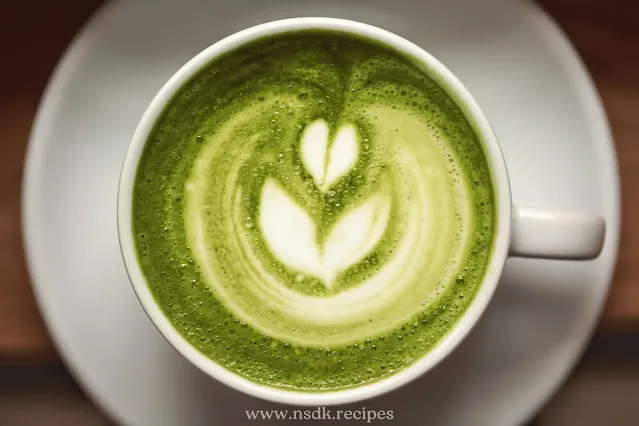 |
| Japan's Green Tea Elixir |
Matcha, a finely ground green tea powder, is a cornerstone of Japanese culture and cuisine. Whisked with hot water to create a frothy,
vibrant green drink, matcha offers a unique umami flavor profile and a wealth of health benefits. Revered for centuries, it has become a global sensation, featured in everything from lattes to desserts. This guide explores the origins, benefits, and recipes of matcha while answering popular questions about its significance and uses.
Why Is Matcha So Popular in Japan?
Matcha's popularity in Japan stems from its deep historical and cultural roots. Introduced by Buddhist monks in the 12th century, matcha became a symbol of mindfulness and ritual in
Japanese tea ceremonies. Its production, preparation, and consumption embody harmony, respect, purity, and tranquility, core principles of Japanese culture.
Why Is Japanese Matcha So Expensive?
Japanese matcha is expensive because of the labor-intensive process involved in its production.
High-quality matcha is made from shade-grown tea leaves, which are meticulously hand-picked, steamed, and stone-ground into a fine powder. This method preserves its vibrant color, rich flavor, and potent antioxidants. Premium matcha, often used in ceremonies, demands even more precision, making it a luxurious yet worthwhile investment.
Matcha vs. Green Tea: What's the Difference?
While both
matcha and green tea come from the same plant (Camellia sinensis), they differ significantly in cultivation and preparation:
- Cultivation: Matcha is shade-grown, which boosts chlorophyll and amino acid content, giving it a vibrant green hue and creamy taste.
- Preparation: Matcha is consumed as a powder whisked into water, while green tea is brewed with leaves.
Because matcha uses the whole leaf, it offers a more concentrated dose of nutrients and antioxidants, making it potentially healthier than green tea.
Is Matcha Healthier Than Coffee?
Matcha is often considered a healthier alternative to coffee. While both contain caffeine, matcha provides a smoother, sustained energy boost due to the presence of L-theanine, an amino acid that promotes relaxation without drowsiness. Additionally,
matcha is packed with antioxidants, particularly catechins, which are linked to numerous health benefits like improved metabolism and heart health.
Do Japanese Drink Matcha with Milk?
Traditionally,
Japanese matcha is prepared without milk, emphasizing its natural umami and slightly bitter flavor. However, the global rise of matcha lattes has introduced the practice of adding milk, often to balance the bitterness and enhance creaminess. While not traditional, this variation has gained popularity both in and outside Japan.
Matcha Tea Benefits
Drinking matcha regularly can provide several health benefits, including:
- Rich in Antioxidants: Helps protect cells from damage and reduces inflammation.
- Boosts Brain Function: Improves memory, attention, and reaction time.
- Enhances Metabolism: Supports weight management and fat burning.
- Promotes Calmness: Thanks to L-theanine, it provides relaxation while maintaining alertness.
Matcha Drink Recipes
Classic Matcha Tea
Ingredients:
- 1 tsp matcha powder
- 2–3 oz hot water (about 175°F or 80°C)
Instructions:
- Sift the matcha powder into a bowl to prevent clumps.
- Add a small amount of hot water and whisk vigorously in a "W" motion using a bamboo whisk (chasen) until frothy.
- Slowly pour in the remaining water, whisking to combine.
- Enjoy immediately.
Creamy Matcha Latte
Ingredients:
- 1 tsp matcha powder
- 2 oz hot water (175°F or 80°C)
- 6 oz steamed milk (dairy or non-dairy, like almond or oat milk)
- 1–2 tsp honey or sweetener (optional)
Instructions:
- Sift matcha powder into a bowl.
- Add hot water and whisk until frothy.
- Heat and froth the milk using a frother or by whisking on the stove.
- Pour the matcha mixture into a cup and top with steamed milk.
- Sweeten to taste, if desired.
Iced Matcha Latte
Ingredients:
- 1 tsp matcha powder
- 2 oz hot water (175°F or 80°C)
- 6 oz cold milk (dairy or non-dairy)
- Ice cubes
- 1–2 tsp sweetener (optional)
Instructions:
- Whisk matcha powder with hot water until smooth and frothy.
- Fill a glass with ice cubes.
- Pour the matcha mixture over the ice and add cold milk.
- Stir well, sweeten if desired, and enjoy chilled.
Matcha Smoothie
Ingredients:
- 1 tsp matcha powder
- 1 banana
- 1 cup almond milk (or preferred milk)
- ½ cup spinach (optional for added nutrients)
- 1–2 tsp honey or maple syrup (optional)
- Ice cubes
Instructions:
- Blend all ingredients in a blender until smooth.
- Pour into a glass and serve immediately for a refreshing, nutrient-packed drink.
Conclusion
Matcha is more than a
drink; it’s an experience that connects tradition, health, and flavor. Whether you enjoy it as a
classic tea, a creamy latte, or a refreshing smoothie, matcha’s versatility makes it a delightful addition to any beverage repertoire. With its deep cultural significance and host of health benefits, it’s no wonder matcha continues to capture the hearts of tea lovers worldwide.








.webp)



